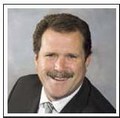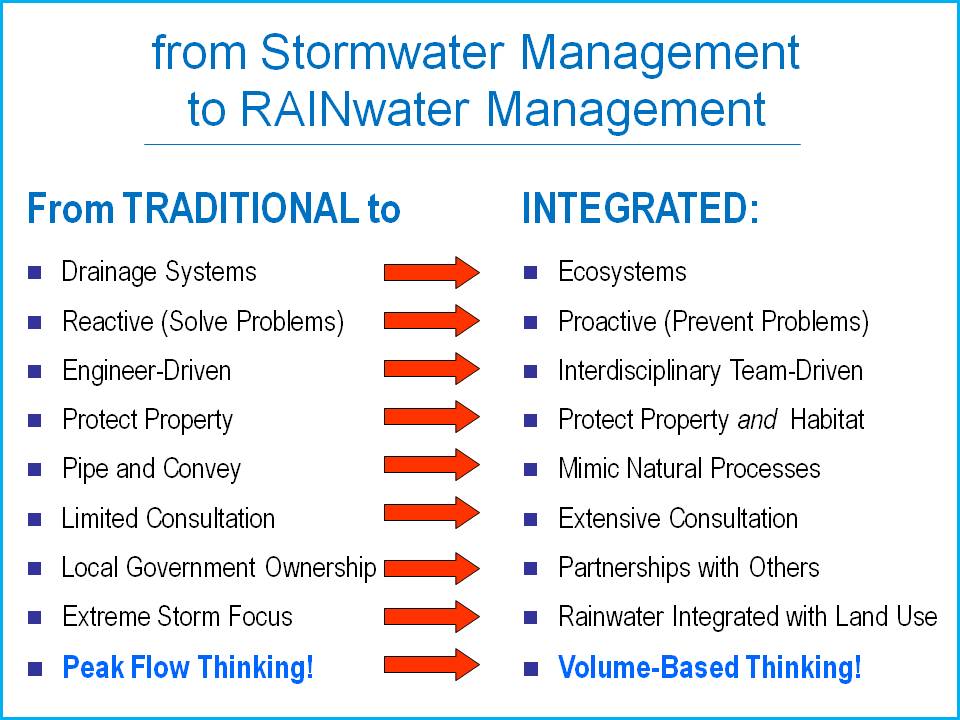Well, What is Rainwater Management, Really?
Beyond the Guidebook 2007
In June 2007, the Inter-Governmental Partnership and Green Infrastructure Partnership jointly released Beyond the Guidebook: Context for Rainwater Management & Green Infrastructure in British Columbia,
 “Release of Beyond the Guidebook 2007 was an important milestone in the ongoing process of informing and educating practitioners in a local government setting about the importance of truly integrating drainage and land use,” states Ted van der Gulik, Chair of the Inter-Governmental Partnership that developed and maintains the Water Balance Model.
“Release of Beyond the Guidebook 2007 was an important milestone in the ongoing process of informing and educating practitioners in a local government setting about the importance of truly integrating drainage and land use,” states Ted van der Gulik, Chair of the Inter-Governmental Partnership that developed and maintains the Water Balance Model.
“When we released the document, one of our goals was to lift the sights of practitioners so that they would see beyond the single-function view of traditional ‘stormwater management’. By 2007, the time had come to focus drainage engineers and other practitioners on why we are placing emphasis on the integrated and holistic approach that is captured by the term RAINwater management.“
The Paradigm-Shift to ‘RAINwater’
 “The paradigm-shift actually occurred three years earlier, in 2004. The late Don Moore, then with Wesbild (developers of the Westwood Plateau) and later with the CIty of Coquitlam, was the catalyst for inspiring us to look at things differently,” continues Kim Stephens, Program Coordinator for the Water Sustainability Action Plan for British Columbia.
“The paradigm-shift actually occurred three years earlier, in 2004. The late Don Moore, then with Wesbild (developers of the Westwood Plateau) and later with the CIty of Coquitlam, was the catalyst for inspiring us to look at things differently,” continues Kim Stephens, Program Coordinator for the Water Sustainability Action Plan for British Columbia.
“It was late 2003 and early 2004 when Don and I co-authored a guidance document for Wesbild about designing with nature on Burke Mountain. I remember it as though it was only yesterday when Don looked at me  quizzically and asked: Why do we say stormwater management; shouldn’t it be RAINwater management? Don was a commonsense practitioner; he was not captive to terminology. Long story short, part of Don’s legacy is being the catalyst for a language-shift in British Columbia…. because that fresh perspective by Don resulted in a light-bulb moment for me and others in the Inter-Governmental Partnership.”
quizzically and asked: Why do we say stormwater management; shouldn’t it be RAINwater management? Don was a commonsense practitioner; he was not captive to terminology. Long story short, part of Don’s legacy is being the catalyst for a language-shift in British Columbia…. because that fresh perspective by Don resulted in a light-bulb moment for me and others in the Inter-Governmental Partnership.”
“Not long after Don asked his thought-provoking question, Innovation Magazine invited the Inter-Governmental Partnership to submit an article about the Water Balance Model. This led to a branding piece that we titled Sustainable Community Design: A New Approach to Rainwater Management, published in June 2004. This was a defining moment in terms of commencing the paradigm-shift in practitioner thinking that the Water Balance Model has come to symbolize.”
The First ‘Engineered’ Rain Garden
“Don Moore was also responsible for constructing the first ‘engineered rain garden’ in British Columbia. This was built at the Wesbild offices on the Westwood Plateau at the end of 2004. We describe it as ‘the first engineered’ because it was constructed in accordance with design guidelines developed for Metro Vancouver. Don came up with a practical way to monitor the performance of the rain garden, thererby providing some of the earliest data on the effectiveness of landscape-based measures for rainfall capture.”
Let It Rain Conference
“In March 2005, Don was the driving force in organizing the Let it Rain Conference, hosted by the Institute of Urban Ecology at Douglas College in New Westminster. At the conference, Don told the story about the Wesbild rain garden.”
Paul Cipywynk summarized the day nicely in his blog when he wrote: “Oh, one neat idea that popped up was no longer talking about ‘stormwater management’ but shifting to ‘rainwater management.’ Presenter Don Moore said that MS Word always flagged ‘stormwater’ as incorrect, while ‘rainwater’ was OK, and that led him to think about changing all uses of ‘stormwater’ to ‘rainwater.’ It is rain after all, not just storms, and ‘stormwater’ has developed negative connotations, such as flooding. So from now on, no more ‘stormwater management’, its ‘rainwater management’.”
To download a copy of Don Moore’s presentation, click on Rain Gardens – A Low Impact Development Tool (8.3MB PDF).
Don Moore’s Legacy
During his career, Don Moore worked for the City of Vancouver, Municipality of Delta, Webild Enterprises and City of Coquitlam. He joined Wesbild in 2004 as Manager of Environment.
“Don’s hallmark at this stage in his career were his ‘green infrastructure’ initiatives, which he enthusiastically promoted at each of his development sites,” recalls David Desrochers, his longtime friend and former colleague at the City of Vancouver.
“Telling the story of Don Moore and his contribution to RAINwater management is a way to keep his memory alive. It is also fitting that Don Moore Drive on Burke Mountain in Coquitlam is named after him,” concludes Kim Stephens.
To learn more about the life and times of Don Moore, click here to read the tribute published in Watermark Magazine, the journal of the British Columbia Water & Waste Association.
It’s About Integration with Land Use
The desired outcome of RAINwater Management is to improve both the natural and built environments in an urban setting. This means determining how rainfall capture objectives can be integrated with land development processes and tools to mitigate the cumulative impacts of landscape alternation, and instead produce cumulative benefits at a watershed scale.
The foundation upon which the ‘RAINwater management’ approach is built is the estimation of the amount of water in the stream over a long period of time. This provides the linkage between the needs of the aquatic environment and the potential to physically alter the stream with increased erosion induced by urban development.
In November 2005, the Inter-Governmental Partnership released Well, What is Rainwater Management, Really? This one-pager provides a concise overview of the paradigm-shift from STORMwater to RAINwater management.




